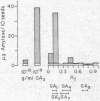Abstract
Light-induced germination of Anemia spores can be inhibited by AMO-1618, a selective inhibitor of gibberellin biosynthesis. The inhibitor has no effect on gibberellin-induced dark germination and its inhibition of light-induced germination can be reversed by supplying gibberellin. Barley-endosperm bioassay of concentrates of medium in which spores are imbibed in light reveals the presence of substances with gibberellin-like activity; assay of medium from dark-imbibed spores does not. Simultaneous exposure of spores to sub-optimal levels of light and gibberellin leads to additivity of effect on germination level. Uptake of labeled gibberellin by spores in light is similar to that in darkness. The implications of these findings for the light-dependent synthesis of a gibberellin-like germination substance are discussed. The bearing of the observations upon understanding the interaction of light and gibberellins in seeds of higher plants is considered.
Full text
PDF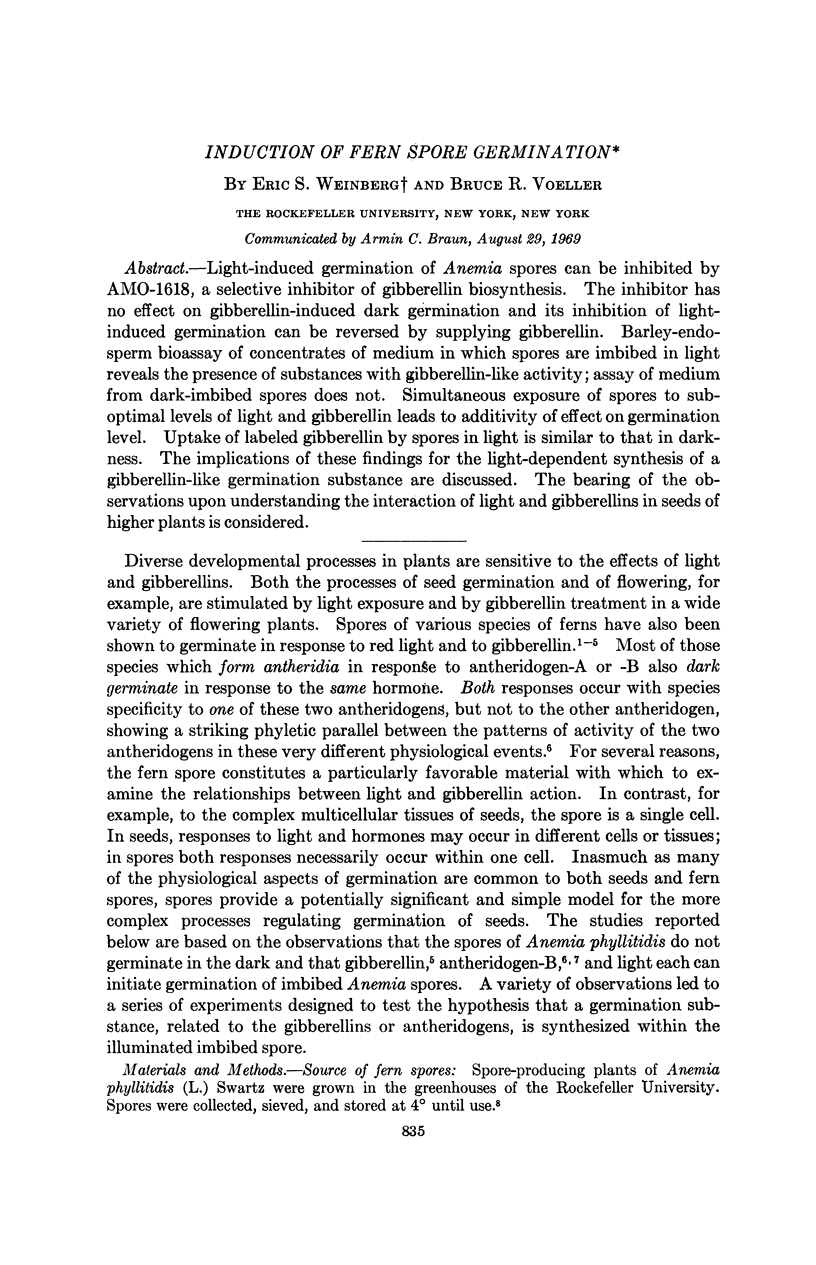
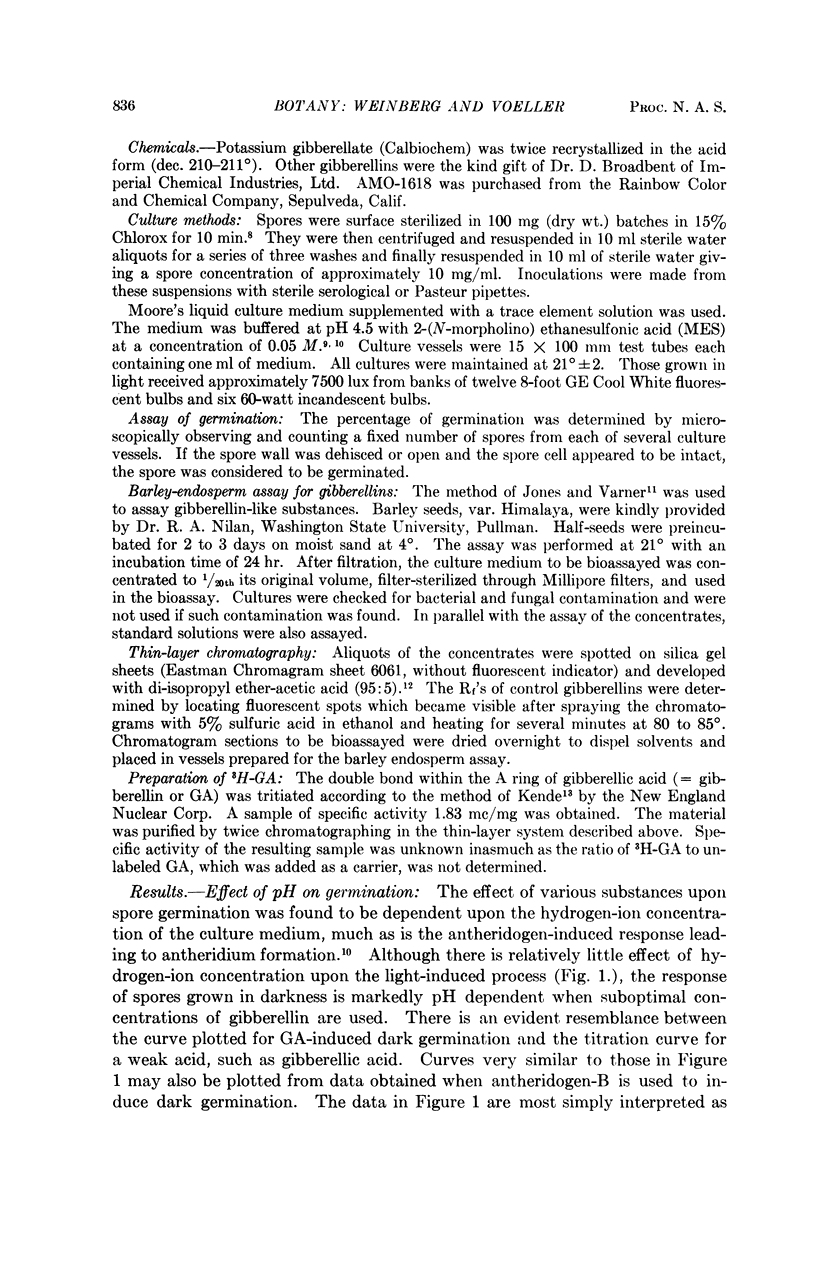
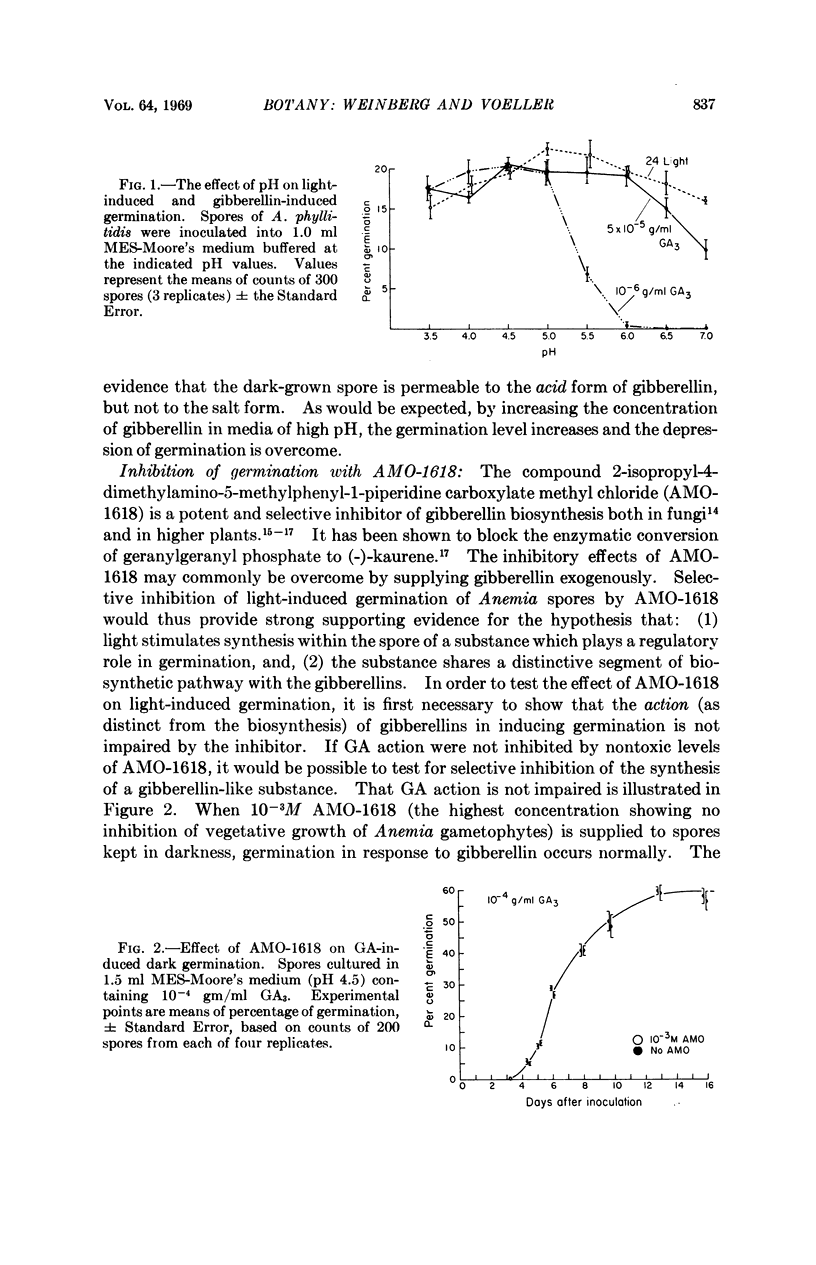
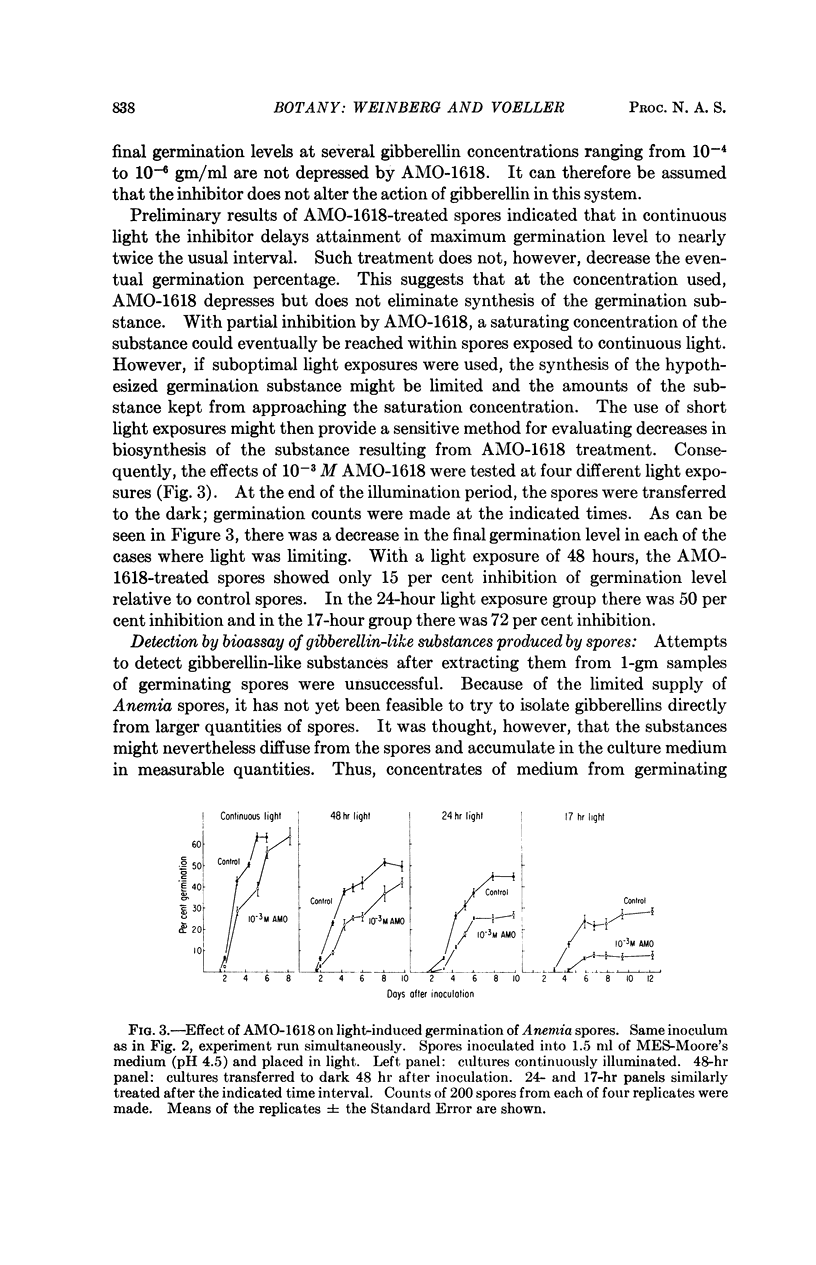
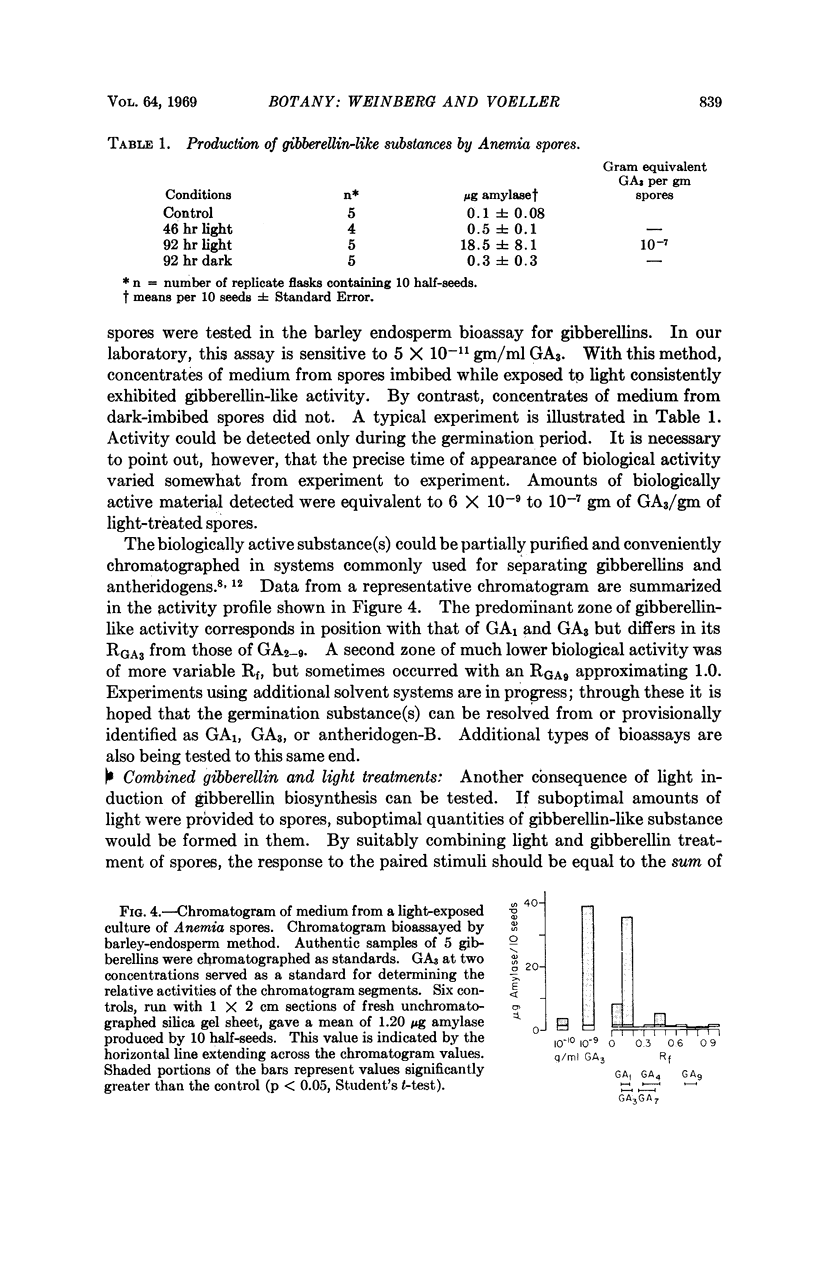
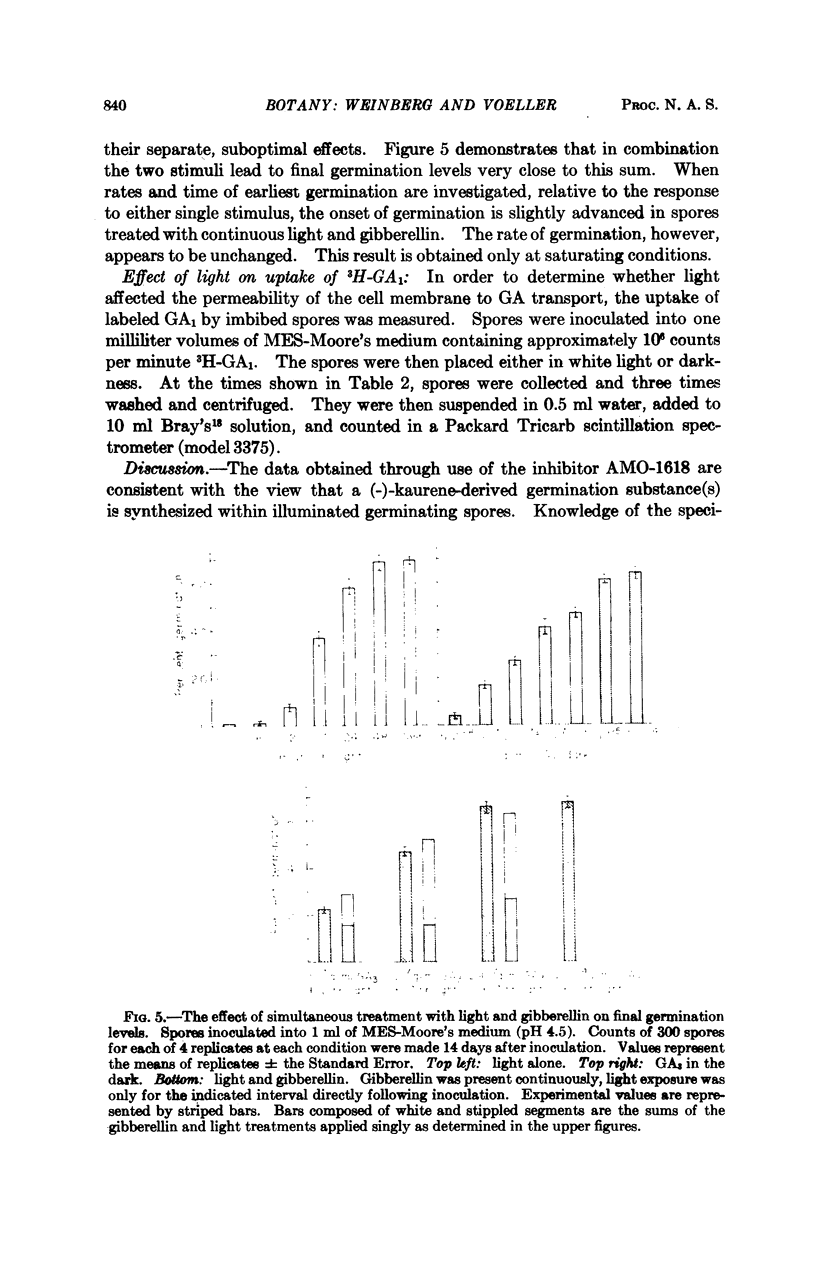
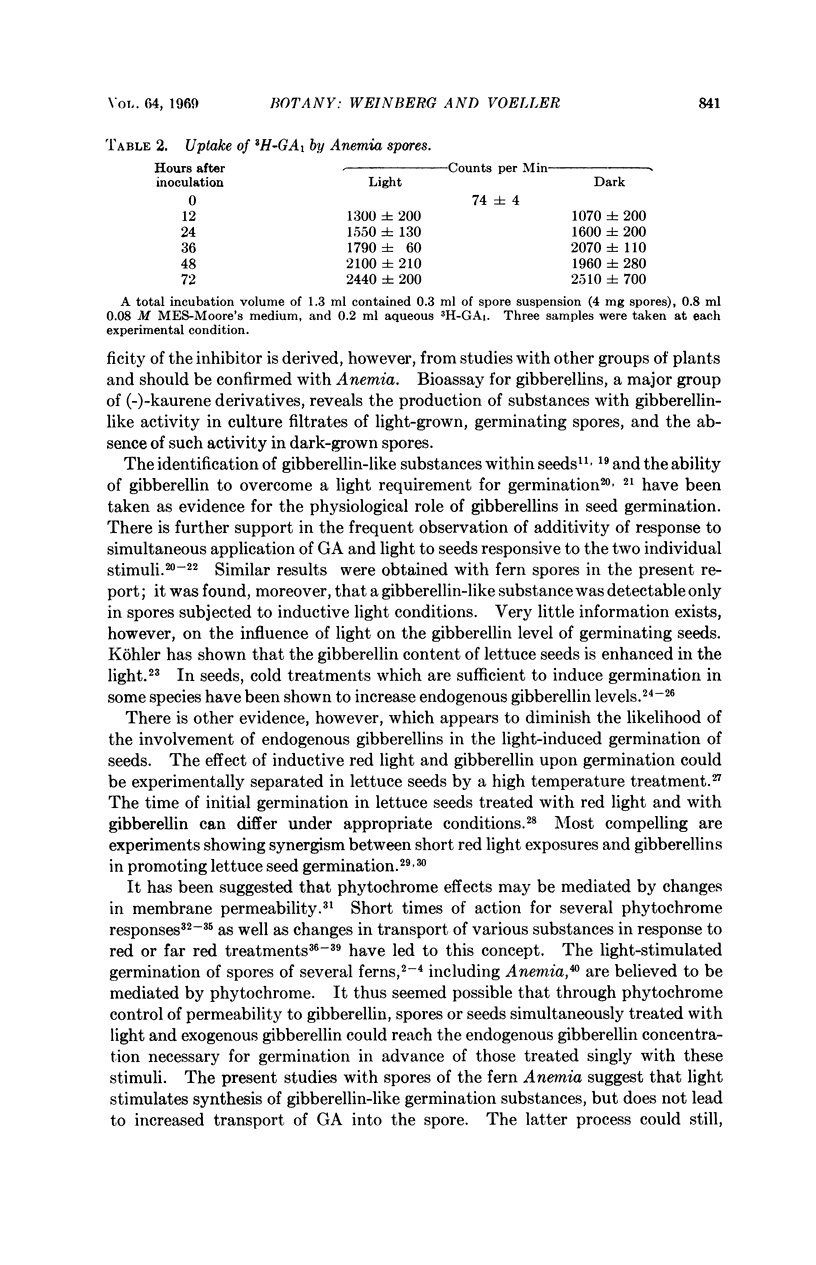
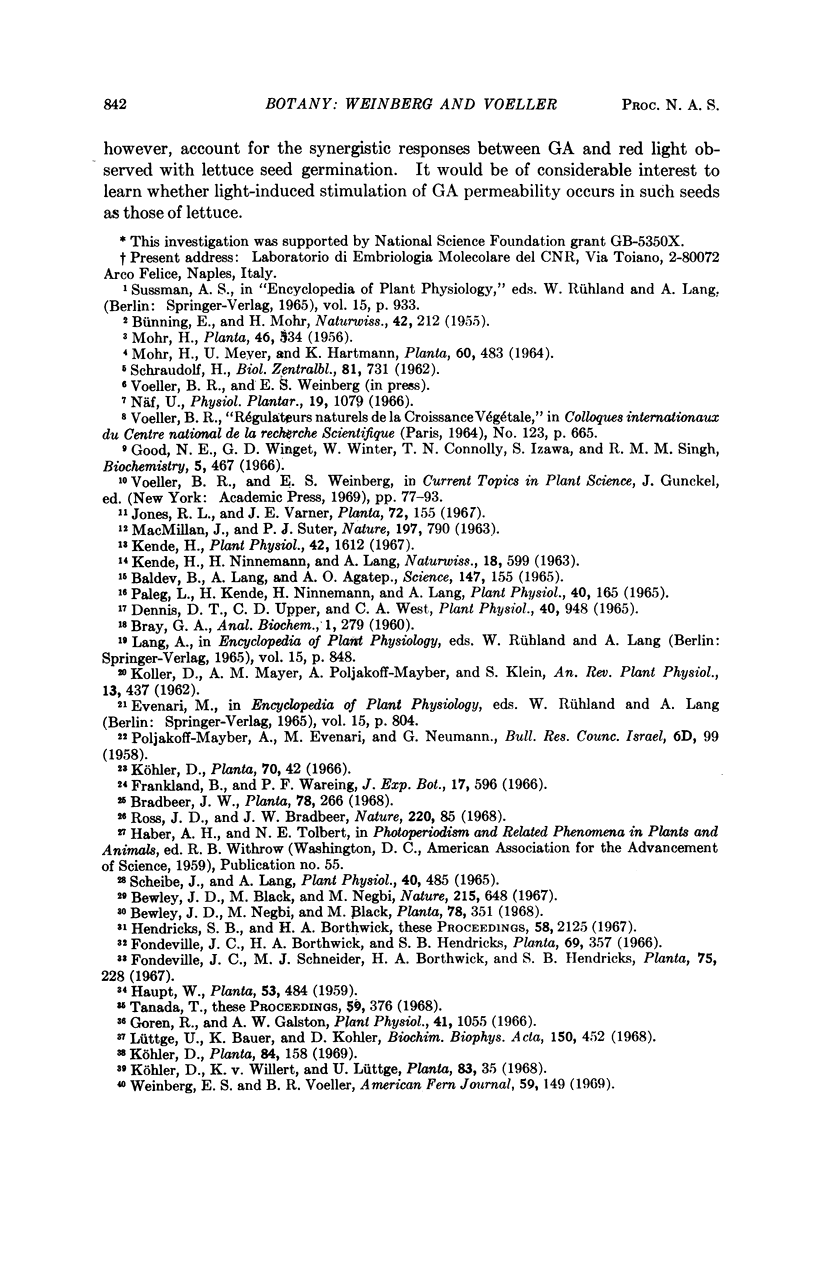
Images in this article
Selected References
These references are in PubMed. This may not be the complete list of references from this article.
- BALDEV B., LANG A., AGATEP A. O. GIBBERELLIN PRODUCTION IN PEA SEEDS DEVELOPING IN EXCISED PODS: EFFECT OF GROWTH RETARDANT AMO-1618. Science. 1965 Jan 8;147(3654):155–157. doi: 10.1126/science.147.3654.155. [DOI] [PubMed] [Google Scholar]
- Dennis D. T., Upper C. D., West C. A. An enzymic site of inhibition of gibberellin biosynthesis by Amo 1618 and other plant growth retardants. Plant Physiol. 1965 Sep;40(5):948–952. doi: 10.1104/pp.40.5.948. [DOI] [PMC free article] [PubMed] [Google Scholar]
- Good N. E., Winget G. D., Winter W., Connolly T. N., Izawa S., Singh R. M. Hydrogen ion buffers for biological research. Biochemistry. 1966 Feb;5(2):467–477. doi: 10.1021/bi00866a011. [DOI] [PubMed] [Google Scholar]
- Goren R., Galston A. W. Control by phytochrome of C-sucrose incorporation into buds of etiolated pea seedlings. Plant Physiol. 1966 Jun;41(6):1055–1064. doi: 10.1104/pp.41.6.1055. [DOI] [PMC free article] [PubMed] [Google Scholar]
- Hendricks S. B., Borthwick H. A. The function of phytochrome in regulation of plant growth. Proc Natl Acad Sci U S A. 1967 Nov;58(5):2125–2130. doi: 10.1073/pnas.58.5.2125. [DOI] [PMC free article] [PubMed] [Google Scholar]
- Kende H. Preparation of radioactive gibberellin a(1) and its metabolism in dwarf peas. Plant Physiol. 1967 Nov;42(11):1612–1618. doi: 10.1104/pp.42.11.1612. [DOI] [PMC free article] [PubMed] [Google Scholar]
- Lüttge U., Bauer K., Köhler D. Frühwirkungen von Gibberellinsaure auf Membrantransporte in jungen Erbsenpflanzen. Biochim Biophys Acta. 1968 Apr 29;150(3):452–459. doi: 10.1016/0005-2736(68)90144-2. [DOI] [PubMed] [Google Scholar]
- Paleg L., Kende H., Ninnemann H., Lang A. Physiological effects of gibberellic acid. 8. Growth retardants on barley endosperm. Plant Physiol. 1965 Jan;40(1):165–169. doi: 10.1104/pp.40.1.165. [DOI] [PMC free article] [PubMed] [Google Scholar]
- Ross J. D., Bradbeer J. W. Concentrations of gibberellin in chilled hazel seeds. Nature. 1968 Oct 5;220(5162):85–86. doi: 10.1038/220085a0. [DOI] [PubMed] [Google Scholar]
- Scheibe J., Lang A. Lettuce Seed Germination: Evidence for a Reversible Light-Induced Increase in Growth Potential and for Phytochrome Mediation of the Low Temperature Effect. Plant Physiol. 1965 May;40(3):485–492. doi: 10.1104/pp.40.3.485. [DOI] [PMC free article] [PubMed] [Google Scholar]
- Tanada T. A rapid photoreversible response of barley root tips in the presence of 3-indoleacetic Acid. Proc Natl Acad Sci U S A. 1968 Feb;59(2):376–380. doi: 10.1073/pnas.59.2.376. [DOI] [PMC free article] [PubMed] [Google Scholar]



